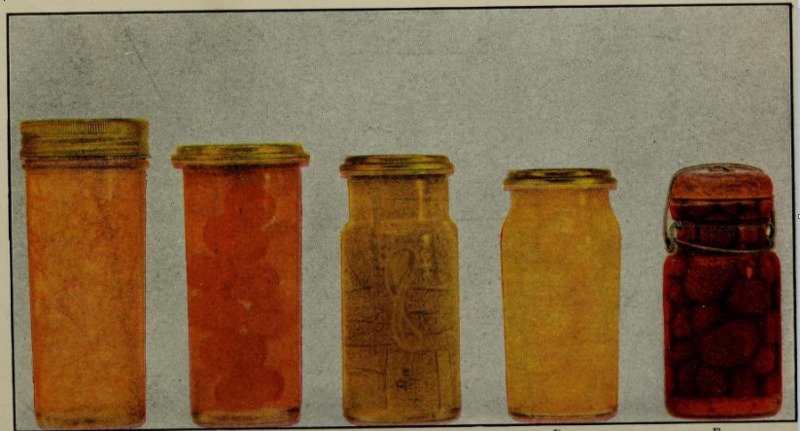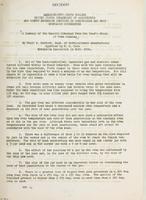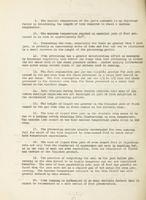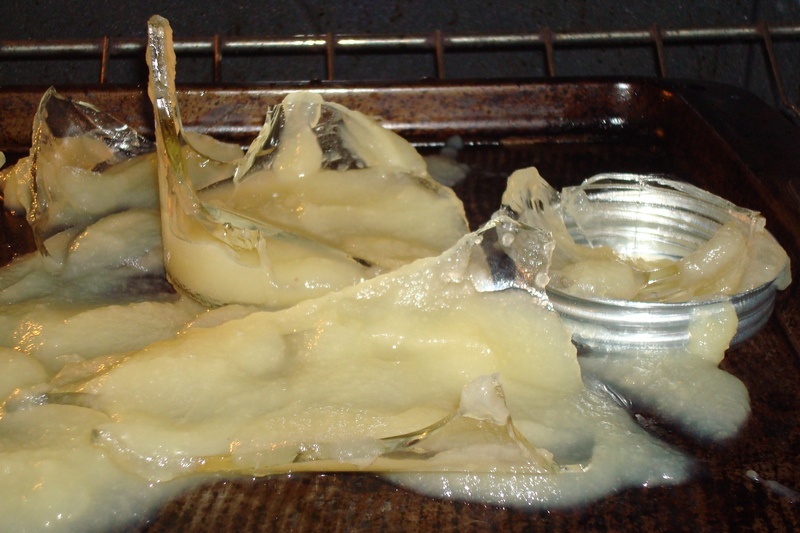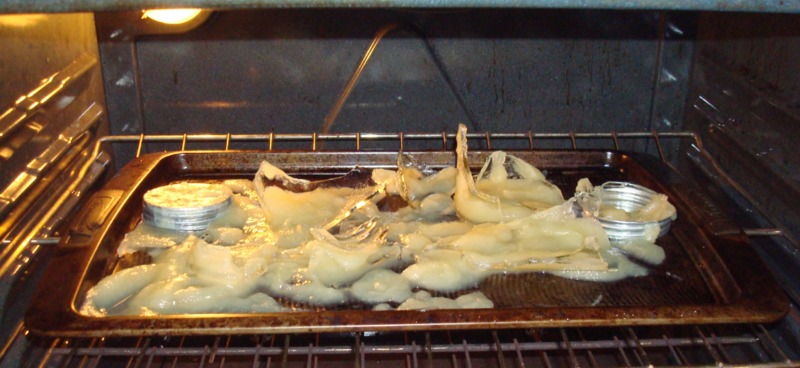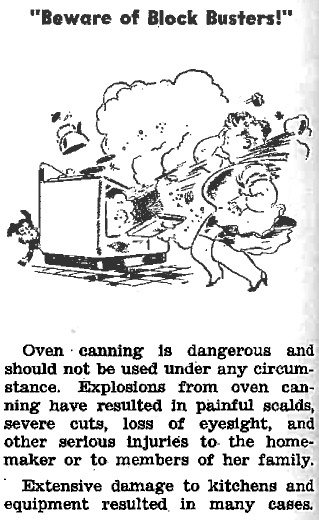Oven Canning
Oven canning was a popular method of home canning around the turn of the 20th century, in part because it did not result in a sweltering kitchen and removed the risk of steam burns, but has since been deemed an unsafe method of canning. In 1905, an author of an article in Farmers’ Bulletin claimed of oven canning:
[t]his method of canning fruit, in the opinion of the writer, is the one to be preferred. The work is easily and quickly done, and the fruit retains its shape, color, and flavor better than when cooked in the preserving kettle.
--Parloa, M. (1905). Canned fruit, preserves, and jellies: Household methods of preparation. United States Department of Agriculture: Farmers’ Bulletin, 203. Retrieved from https://archive.org/details/CAT87202085
In 1917, the USDA announced that pressure canning was the only safe way to can low-acid foods, but during this period oven canning was still approved for acid-foods (Tope, 1977).The consensus on the safety of the oven canning method had changed by the end of World War II to the belief that:
[o]ven canning is influenced by so many variable factors that it cannot be recommended as a safe method of food preservation.
--Haddock, P. R. (1940). A summary of the results obtained from two year’s study of oven canning. Massachusetts State College Extension Service, United States Department of Agriculture, & County Extension Services in Agriculture and Home Economics. Retrieved from https://archive.org/details/CAT10962095
Warnings on the dangers of oven canning appeared in various newspaper articles. The Chanute Times article, "Burned by Exploding Fruit Jar," states that the victim was "terribly burned," and "may lose her eyesight (Burned by Exploding Fruit Jar, 1908)." During World War II, headlines in the New York Times included “Home Canners Advised: Safety Council Cautions on Use of Oven Method,” and “Oven Canning Method Found Most Unsafe: 80% of Accidents Last Year in Home Preserving Laid to It (Home Canners Advised, 1946 and Oven Canning Method Found Most Unsafe, 1944)."
In 1945, the National Safety Council and USDA produced a skit for radio broadcast about the safety risks posed by oven canning entitled, “Taylor-Made Safety.”
“SISTER: Yes—the oven door just missed me—it flew right by me!
JOE: Say—we fellows are slugging it out in the Pacific to keep you folks back home safe and sound. What’s the idea blowing yourself up?
MOM: I’m through with oven canning!”
--United States Department of Agriculture, & National Safety Council. (1945). Taylor-made safety. Retrieved from https://archive.org/details/CAT31305318
The National Safety Council recommends the clothing shown at right for anyone planning to use the oven canning method.
--Englander, W. (1944, March-April). Jarred!. Home Safety Review, p. 3.
Oven canning is dangerous and should not be used any circumstance. Explosions from oven canning have resulted in painful scalds, severe cuts, loss of eyesight, and other serious injuries to the home maker or to members of her family.
Extensive damage to kitchens and equipment resulted in many cases.
--National Safety Council. (1945, June-July). Beware of Block Busters! Home Safety Review.
 An official website of the United States government.
An official website of the United States government.


